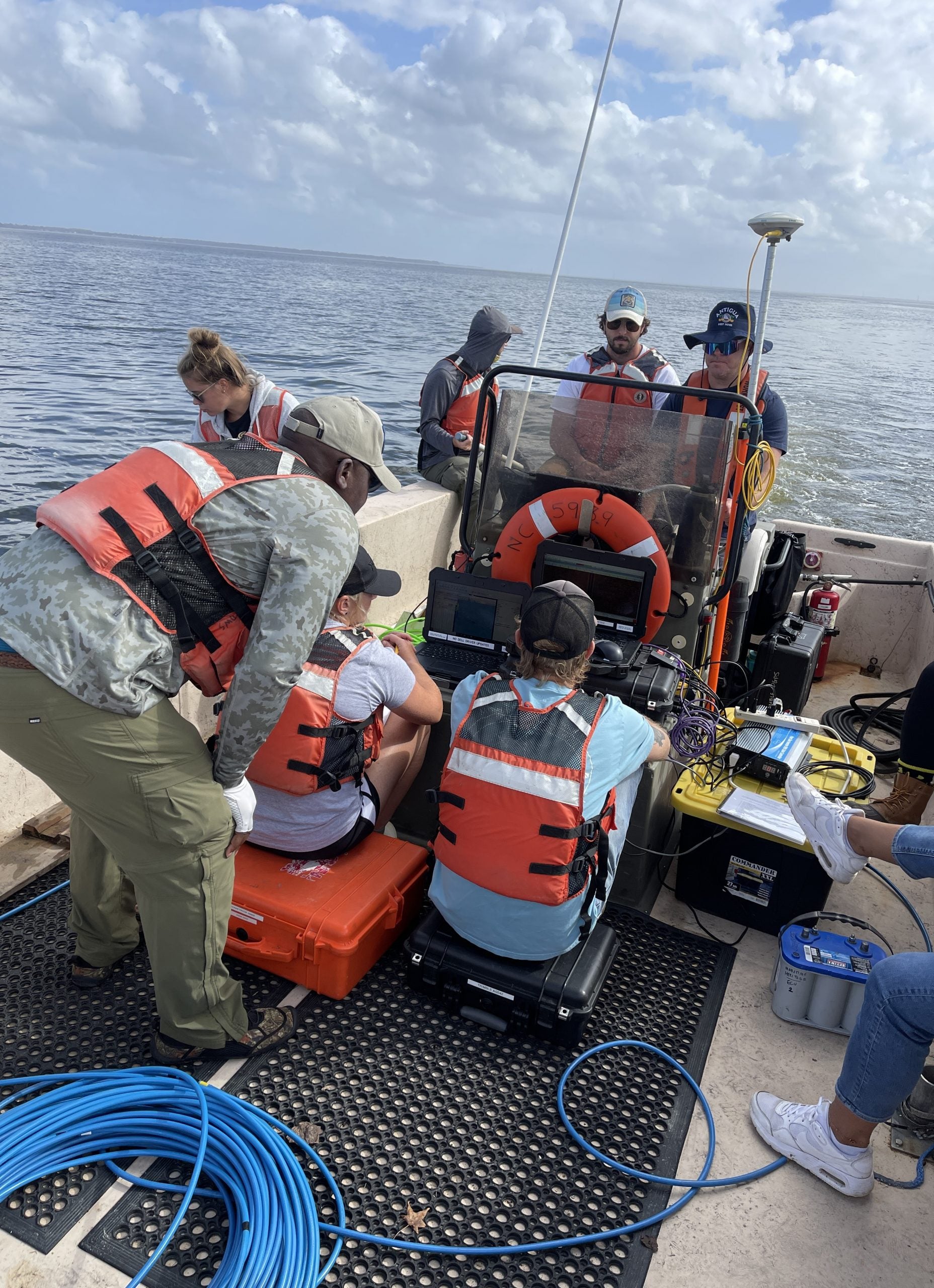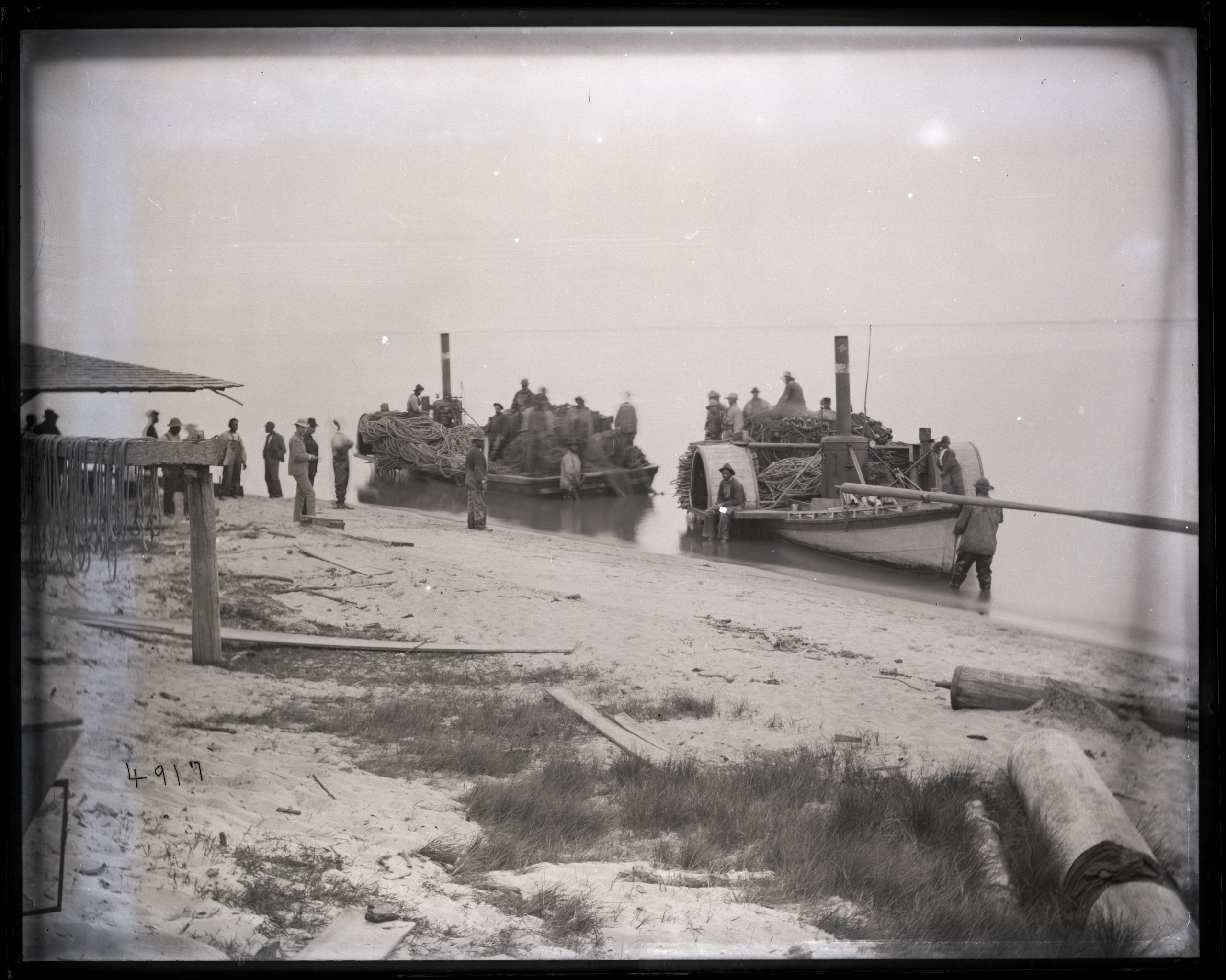ECU students search for clues to a forgotten fishery
Over the course of two days, East Carolina University graduate students in the Program in Maritime Studies searched for clues to a forgotten fishery within the dark waters of Albemarle Sound.
Eight students and four instructors ran a shallow water skiff towing a side scan sonar and magnetometer in the hope of discovering tangible clues to the Sutton Beach and Black Walnut Point fisheries, which were operated by African American communities in Bertie County in the late 19th and early 20th centuries.
This isn’t the first time researchers have looked in the area. Underwater archaeologists first examined sunken watercraft in nearby Salmon Creek in the late 1980s, documenting several sunken vessels believed to have been associated with the fishery. More recently, ECU’s Dr. Jason Raupp, assistant professor of history, and Dr. Jennifer McKinnon, professor of history, led fieldwork in the same area, re-examining several of the previously recorded watercraft and seeking others.
Inspired by the work of historian Dr. David Cecelski and the photographic collections of the fishery housed at the Smithsonian Institution, this project — led by Dr. Nathan Richards, director of maritime studies, and graduate student Levi Holton — focuses on the fishing activities that once emerged from an area hugging the shorelines around present-day Scotch Hall and extending into the Albemarle Sound.
In addition to teaching students how to use archaeological search technologies, the goal of the study is to examine the social and economic conditions of African American fishing communities in the Albemarle Sound, which date to the 18th century. The fisheries that would eventually emerge at Suttons Beach and Black Walnut Point near Avoca, and the Greenfield fishery out of Edenton, are interesting for a range of reasons, from the use of distinctive paddle-wheeled steam flats used to haul nets, to the fact that the fishing was overwhelmingly dominated by African American men, women and children.
The “… web of social dynamics and the intersection of economic factors and social constructs that shaped the experiences of the African American community during this time and space are worthy of acknowledgment and study,” said Holton. He hopes to chart the growth and decline of the fishery, and to “… reveal the role of race in the social and economic conditions of these fishers of the Albemarle Sound.”
ECU’s maritime studies program, established in 1981, has a distinguished international reputation for teaching and research. Faculty and students have pursued many projects around the world, including investigations of the USS Monitor, CSS Alabama, USS Tecumseh, USS Arizona, Maple Leaf, 16th century sites in Bermuda and Florida, and the Yorktown Shipwreck Archaeological Project. The program offers a master’s degree in maritime history and nautical archaeology. Combining classroom lectures and seminars with hands-on field projects and internships, the maritime program provides a thorough education for those interested in a professional career in maritime history and nautical archaeology.
###
East Carolina University News Services
Howard House, 1001 E. Fifth Street
Greenville, NC 27858
ecunews@ecu.edu
252-328-6481
news.ecu.edu
Contact: Dr. Nathan Richards, director, Program in Maritime Studies, richardsn@ecu.edu
Provided photos
Fishery1.jpg: ECU students and staff use a side scan sonar and magnetometer to search the waters of Albemarle Sound. (ECU photo by Nathan Richards)
Fishery2.jpg: Fishermen on sidewheel platform steamers, 1881. (Image credit: Smithsonian Institution, SIA-MAH-4917)

